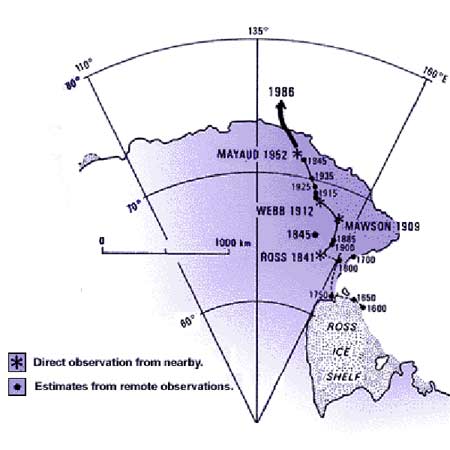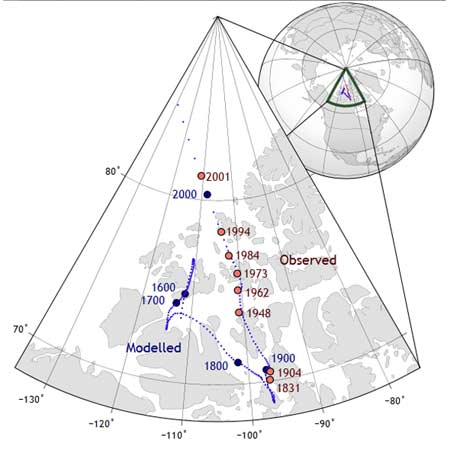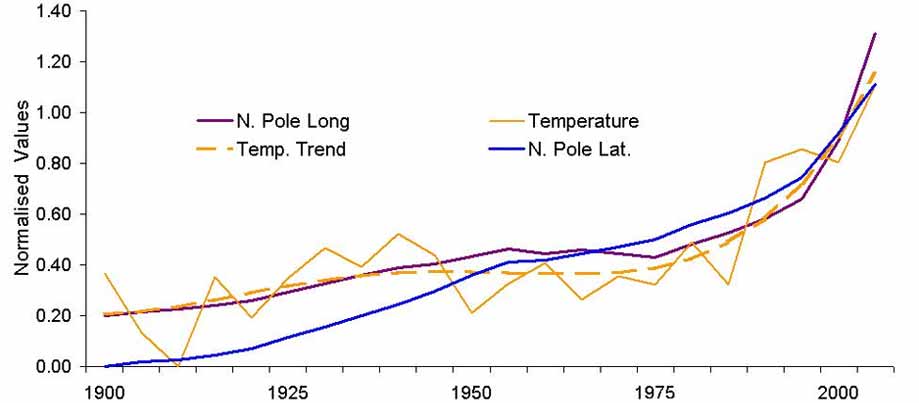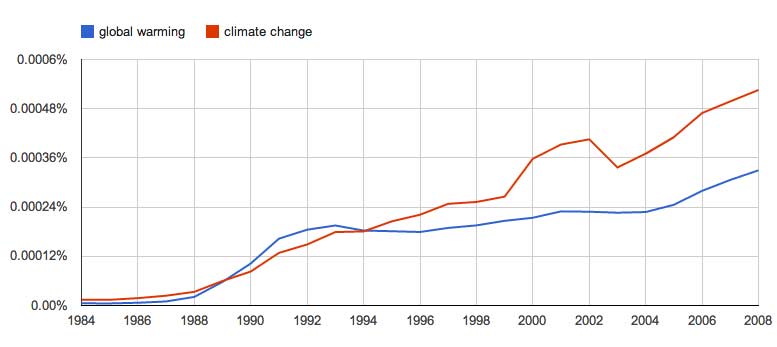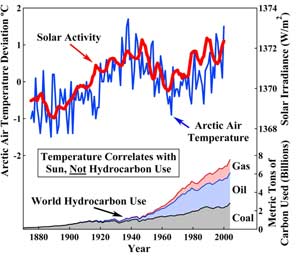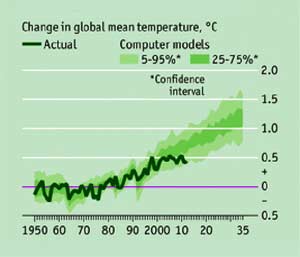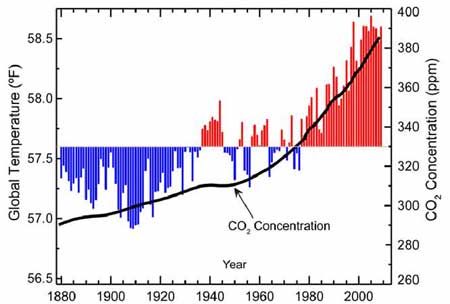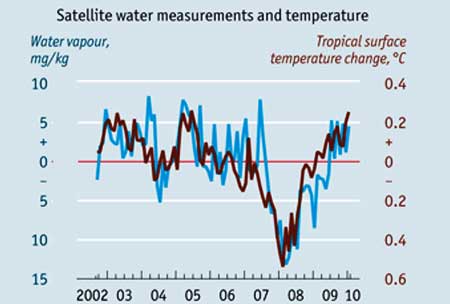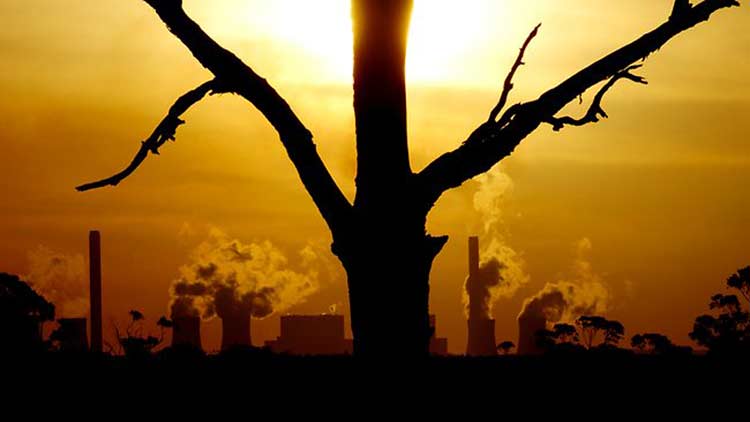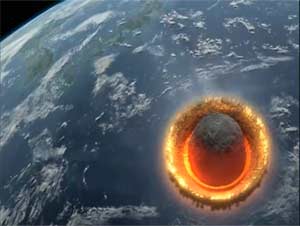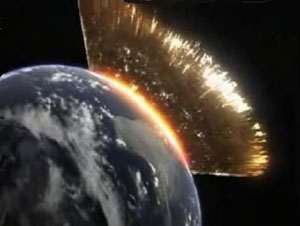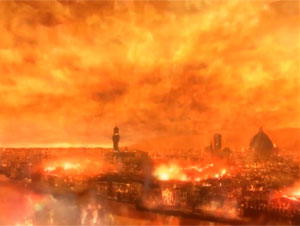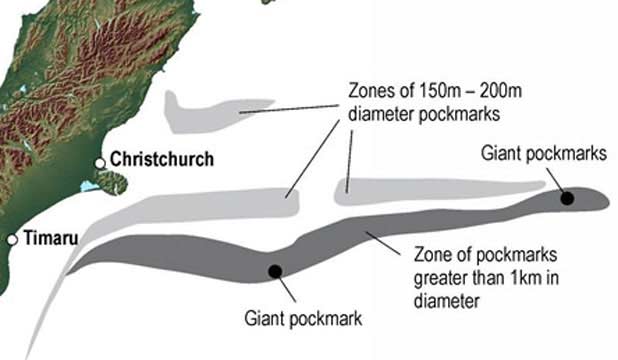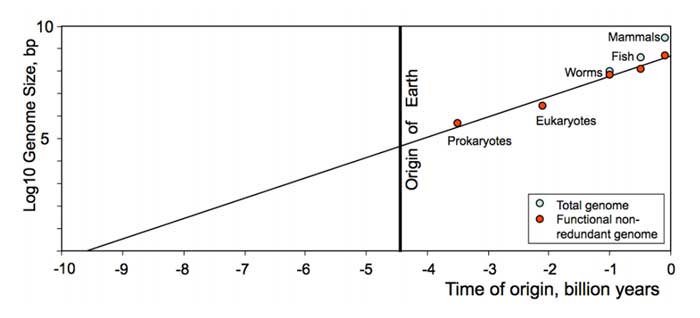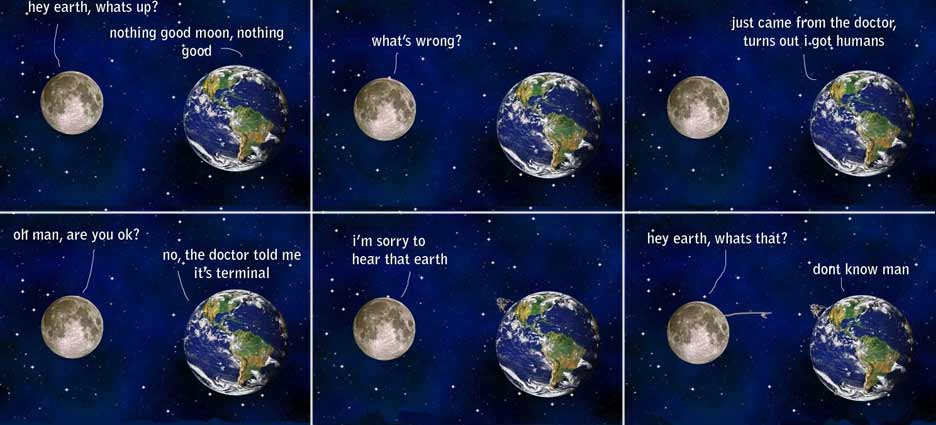The great enemy of the truth is very often not the lie (deliberate, contrived and dishonest),
but the myth (persistent, persuasive and unrealistic).
Looking at Earth
April 29, 2013
Attitydinkontinens, n. Definition: Literally, “attitude incontinence,” the inability to keep one’s opinions to oneself.
Used in an English sentence: “Sorry for that long comment I left on your post just now.
I guess I had a temporary case of attitydinkontinens.”
Earth Spinning
A dip pole is defined as the position where the direction of Earth’s magnetic field is vertical. It’s also called the magnetic pole. Contrary to what you might expect, the north and south poles aren’t physically located diametrically opposite each other (they aren’t antipodal — that is, a line drawn from one to the other doesn’t pass through the geometric centre of the earth). Thus the field isn’t an exact dipole. Instead, the South Geomagnetic Pole (physically exactly opposite the North Magnetic Pole) isn’t the same as the South Magnetic Pole. Nor are they progressing at the same rate: the North Magnetic Pole is moving 55-60 kilometres per year versus 10-15 kilometres per year for the South Magnetic Pole. In practice, the geomagnetic field is vertical and that location can vary consideraby from one day to the next. This is because Earth’s magnetic field lines aren’t exactly symmetrical.
From Energy & Environment, Volume 20, Numbers 1-2, January 2009 , pp. 75-83(9): Analysis of the movement of Earth’s magnetic poles over the last 105 years demonstrates strong correlations between the position of the north magnetic, and geomagnetic poles, and both northern hemisphere and global temperatures. Although these correlations are surprising, a statistical analysis shows there is a less than 1% chance they are random, but it is not clear how movements of the poles affect climate.
- Locations of Magnetic South Pole (dip pole) over time comparing direct observation with model predictions.
- Locations of Magnetic North pole over time. Red circles mark magnetic north pole positions as determined by direct observation, blue circles mark positions modelled using the GUFM model (1590–1980) and the IGRF model (1980–2010) in 2-year increments.
- Northern hemisphere temperature anomaly versus the north magnetic pole longitude and latitude using an average of the North Pole location from 1901 – 2000 and northern hemisphere temperatures.
Earth Warming
While 60% of US Republicans report that climate change is real, only 44% believe in the reality of global warming. However, 86% of US Democrats think our future climate has a serious problem no matter what you call it. So perhaps climate change is the better term because more people agree with it. Climate change may in fact mean that the climate will get colder, or have more temperature extremes (though the average stays essentially the same). The term global warming is more specific but therefore more limiting. Individuals’ perceptions of, and beliefs about, climate change are affected by society, culture, politics, personal experience, ability to discriminate, mood, and (too infrequently at times) facts. Communication of significant scientific agreement on anthropogenic climate change (whether for or against) would imply a likelihood of reliability that could notably influence general public opinion. So why don’t we have one?
Before undertaking to write about this topic, I would’ve come down firmly on the side of the term global warming — it seemed logical and I thought the preponderance of evidence was on that side. Even then, I had concerns. Now? Slightly more concerns. Frankly, I can’t be a rabid advocate at this point for either side. Carbon dioxide (CO²) levels were 389 parts per million (ppm) as of April 2010 — the highest they’ve been in the past 650,000 years. But wait… between 1940 and 1975, CO² levels continually rose, yet global temperatures dropped. And despite a sustained production of anthropogenic greenhouse gases, Earth’s mean near-surface temperature stopped rising during the 2000 – 2010 period. Why? According to a peer-reviewed 19 April 2009 study in Geophysical Research Letters, natural shifts in ocean currents were a major cause of the melting Greenland ice sheet, melting Arctic sea ice, and melting Arctic permafrost, not human-generated greenhouse gases. How important are these things?
Current mean atmospheric CO² is around 390 ppm and mean surface temperature about 14°C. Yet during the Carboniferous Period (359.2 – 299 million years ago) the mean atmospheric CO² content was about 800 ppm (3 times pre-industrial levels) yet the mean surface temperature over the period was about 14°C (the same as today). Further, during the Devonian Period (416 – 59.2 million years ago) the mean atmospheric CO² content over the period was 2,200 ppm (8 times our pre-industrial level). Yet the mean surface temperature over the period was about 20°C (only 6°C above today). How important are these things?
What matters here? Doubters tend to focus on specific bits of evidence, not on the whole picture. This can sometimes make the doubts seem more fundamental than they are. The climate is noisy, with ups and downs of its own that make trends hard to detect.
Natural processes dominate our climate, but many many are poorly or incompletely understood.
- The El Niño Southern Oscillation describes a band of anomalously warm ocean water temperatures that occasionally develops off the western coast of South America and can cause climate changes across the Pacific. There is no single universal definition of the term El Niño.
- The Pacific Decadal Oscillation is a naturally-occuring rearrangement in atmospheric and oceanic circulation patterns, detected as unusually warm or cool surface waters north of 20°N. If the water is warmer, the west Pacific will cool while parts of the eastern ocean will warm; if the water is cooler, the opposite pattern occurs. It shifts phases usually about every 20 to 30 years.
- The Atlantic Multi-decadal Oscillation (AMO) is a mode of variability occurring in the North Atlantic Ocean, principally expressed as sea surface temperature. Controversy exists with regard to amplitude and whether it’s due to natural or anthropogenic causes, especially in tropical areas that develop hurricanes. It has a frequency of 10-20 years. The AMO index is correlated to air temperatures and rainfall over much of the Northern Hemisphere, in particular, North America and Europe, and includes northeastern Brazilian and African Sahel rainfall and North American and European summer climates. It’s associated with changes in frequency of North American droughts and of the severity of Atlantic hurricanes.
Of these, little is known about what powers them. But climate oscillations from various sources do intersect, in places cancelling each other out, in others causing a doubling effect — for example, when warm phases coincide, extra warmth is added to the atmosphere. Intersecting multiple oscillations alternately obscure and exaggerate global temperature increases. It’s very difficult at times to determine what is cause and what is mere correlation.
Laboratory measurements show how much infrared radiation at which specific wavelengths CO² molecules absorb. This indicates that if you double the CO² level you get about 1ºC of warming. So the shift from pre-industrial 280 ppm to 560 ppm (which might be reached around 2070 if current trends continue) makes the world 1ºC warmer. If that level doubles again to 1,120 ppm, you will get another degree. This expectation for doubling has become known as “climate sensitivity”. A climate sensitivity of 1ºC would be small enough to alleviate most climate-related worries. But the direct effect is not the only concern — feedback can amplify this effect. The most important feedback mechanisms involve water vapour (well understood) and clouds (not well understood). Water vapour is transparent, whereas clouds reflect light. When clouds reflect sunlight back into space, this stops it from being absorbed by Earth. Which effect dominates? Estimates about the amount of expected warming vary from around 1.5ºC to 4.5ºC, with most estimates around 3ºC.
The US National Academies of Science, the National Aeronautics and Space Administration (NASA), and the National Oceanic and Atmospheric Administration (NOAA) all say that greenhouse gas levels are rising due to humans burning fossil fuels and cutting down forests, causing Earth to get hotter, sea ice to melt, glaciers to shrink, winds to get stronger, and droughts to become longer and more frequent. Immediate and coordinated international action is crucial to prevent future disaster. Meanwhile, the Heartland Institute, the Heritage Foundation, and the American Association of Petroleum Geologists argue that human-generated greenhouse gas emissions are too small to substantially change Earth’s climate — forests and oceans can absorb small increases. Natural processes, including fluctuations in the sun and in ocean currents (which humans can do nothing about) are causing the warming. Global warming is bad science.
Which position is right? This could be incredibly significant. Predictions about how climate changes will affect civilisation range from a 2003 US Department of Defense report detailing catastrophic weather events and a “significant drop in the human carrying capacity of Earth’s environment,” to a 2007 Oregon Institute of Science and Health report detailing “an increasingly lush environment of plants and animals.” This is quite a spread. Due to insufficient data, the position one takes on the direction in which the climate is headed is at least somewhat based on faith — akin to religion. And like religion, the stakes are impossibly high — a wrong guess could have devastating long-term effects. To lower carbon emissions will often be the most significant expense a country undertakes. NOT lowering emissions may be worse. Early action to reduce emissions may avoid huge future costs if it avoids one or more catastrophic, irreversible changes. But how do we know?
Large-scale changes can occur abruptly (like the swift release of methane from permafrost leading to amplified global warming), but, while scientific understanding of abrupt climate changes are poor, the probability of such a tipping point occurring is generally accepted as low.
Since the early 20th century, Earth’s mean surface temperature has increased by about .8°C (1.4°F) with most of the increase happening since 1980. The climate system responds to changes in external influences by being pushed in the direction of warming or cooling. Influences include:
- changes in atmospheric composition (for example, increased concentrations of greenhouse gases)
- solar luminosity
- volcanic eruptions
- variations in Earth’s orbit around the sun
Orbital cycles vary slowly over tens of thousands of years and at present are in an overall cooling trend which had been expected to lead to an ice age. However, the 20th century record shows a sudden rise in global temperatures.
Big business/oil companies are against the idea of humans causing climate change, in part because it necessitates a move away from carbon-based fuels. Does this explain the support for nature-based climate change from petroleum geologists? Lobby money gets thrown around — both to influence votes on bills and votes on who gets elected. In 2006 ExxonMobil provided more than $19 million in funding to at least 29 “climate change denial front groups.” On the other hand, many research scientists get federal grant money for climate change research — from 1998-2009, nearly $25 billion in federal funds was allocated. This doesn’t prove anything, but it does show that a lot is at stake, bets are being placed, and biases can creep in on both sides.
Curiously, Council on Foreign Relations senior fellow Walter Russell Mead argued that the 2009 Copenhagen Summit failed because environmentalists changed from “Bambi to Godzilla” — environmentalists once represented the skeptical few making arguments against big government programmes imposing simple but massive solutions on complex situations. However, today they’re more likely to be advocates of large amounts of economic and social intervention to slow climate change. Now they’re a voice for the establishment, the tenured, the technocrats. This has cost them a degree of public support.
Why so much controversy? Doesn’t everyone want the same thing — to know the truth?
Let’s start with the climate models available: there are two primary types. The General-Circulation Models (GCM) uses a bottom-up approach by dividing Earth and its atmosphere into a grid. The Energy-Balance Model (EBM) is a top-down approach which treats Earth as a single unit, or sometimes as two hemispheres (northern and southern) representing the whole climate. The GCM generates an enormous number of calculations in order to imitate the climate system and the multiple influences upon it. The complex models that result are extremely detailed. Their disadvantage is that they don’t respond to new temperature readings — they simulate the way the climate works long-term, without taking into account current observations. Therefore, their sensitivity (accuracy) is based on how well they’ve described the processes and feedbacks in the system. The EBM models have equations reflecting things such as changes in greenhouse gases, volcanic aerosols and global temperatures. Such models don’t attempt to model all climate complexities — that’s their drawback. But unlike GCMs, they explicitly use current data and are thus better at representing simple and direct climate feedback mechanisms. Most greenhouse gases are straightforward: they cause warming. Volcanoes are also straightforward in their effects: they cause cooling (by throwing out particles that reflect sunlight back into space). But volcanoes also change atmospheric circulation patterns, which can partially offset that cooling. Simple EBM models can’t capture indirect feedback like that, so they may exaggerate aerosol cooling.
The models agree on some things but not on others. One or the other or both types of models sometimes agree with reality as measured and sometimes not. This makes getting a consensus among experts all but impossible.
The recent period of flat temperatures between 2000 and 2010 was particularly puzzling because neither model predicted it. If EBM models overstate the mitigating effect of aerosols and in reality aerosols are not cooling Earth as much as was thought, then global warming ought to be gathering pace. But it isn’t. Yet flat though they are, temperatures remained almost 1°C above the first decade of the 20th century, they didn’t lower at all. This puzzle needs explaining — what is reining in the warming? One candidate is lower climate sensitivity.
To explain this pause in warming, it has been proposed that an increase in ocean heat uptake below the ocean’s surface layer has been overcompensating for Earth’s extra heat. The deep prolonged solar minimum (resulting in an anomalous lack of sunspots), stratospheric water vapour, and stratospheric and tropospheric aerosols also may have contributed. But one newly-developed model indicates that the primary cause is an increase in ocean heat uptake. Most excess energy at the onset of the warming pause was being absorbed by the top 700 metres of ocean, 65% of that in the Pacific and Atlantic tropics. As with aerosols, this revised conclusion is based on better data from new measuring devices, however, it applies only to the upper 700 metres. What’s going on below that — particularly at depths of 2 kilometres or more — is obscure. It now appears that 30% of the ocean warming in the past decade has occurred in the deep ocean (below 700 metres). The deep oceans are heating in (as far as anyone knows) an unprecedented way. Meanwhile, the long-term rise in surface seawater temperatures seems to have stalled. What this means overall is unclear.
CO² absorbs infrared radiation reflected from Earth at one wavelength and almost instantly re-emits that infrared radiation at a lower wavelength. CO² doesn’t act like a sponge to absorb and hold heat — it re-emits a major portion to space (Earth isn’t a closed energy system). Earth’s temperature rises and falls due to changes in a combination of natural phenomena (water vapour, sun’s energy output, vagaries in Earth orbit, ocean currents, cosmic rays, magnetic pole locations, and more).
The Sahelian drought of the 1970s–1990s was one of the largest humanitarian disasters of the past 50 years, causing up to 250,000 deaths and creating 10 million refugees. The cause was attributed to natural climate variation, overgrazing, and pollution. The Atlantic sea surface temperature gradient is strongly coupled to rain in the Sahel. Sporadic volcanic eruptions in the northern hemisphere also helped to cause the Sahelian drought as 3 of its 4 driest recorded summers have been preceded by substantial volcanic eruptions in the northern hemisphere (where large asymmetric stratospheric aerosol loadings are a drought harbinger). Oddly, aerosol loadings concentrated in the southern hemisphere have an opposite effect (something else not completely understood).
The Economist magazine says if climate scientists were credit-rating agencies, then climate sensitivity — the way climate reacts to changes in carbon dioxide levels — would be on negative watch but not yet downgraded. In other words, improvements in models are sorely needed.
I informally polled several people in and around Wellington, asking them if they felt climate change was real and, if so, what they thought should be done about it. Few people were undecided, expressing their views passionately (albeit most had little detail on why they had arrived at that conclusion). Do observable climate impacts create opportunities for people to become more certain of the reality of climate change, or does prior belief certainty shape people’s perceptions of impacts through a process of motivated reasoning? The relationship between perceived personal experience of climate change and belief certainty that climate change is happening is due to one of two approaches: ‘experiential learning’ is where perceived personal experience of climate change has led to increased belief certainty; ‘motivated reasoning’ is where high belief certainty influences perceptions of personal experience. Tests show that motivated reasoning occurs primarily among people already highly engaged in the issue while experiential learning occurs primarily among people who are less engaged. (Approximately 75% of American adults have low levels of engagement.) What did the firm believers I talked to think should be done? “Whatever it takes” was the answer I received most often. But do they really mean that? Have they really considered the choices?
Cost considerations:
- Human-produced CO² is changing the climate of the world’s oceans. As excess CO² is absorbed, oceanic acidity levels increase. Oceans have absorbed 48% of the total CO² released by human activities and acidity levels are 25-30% higher than prior to human fossil fuel use. This has an effect on the composition of sealife — for example, global warming has long been blamed for the huge rise in the world’s jellyfish population. However, if climate change gets bad enough to result in Canfield Oceans, it’s unlikely jellyfish will survive. Canfield Oceans are named after a geologist who discovered that when oxygen can no longer circulate through oceans, they become sulfuric, slowly suffocating the inhabitants. Jellyfish will thrive if the amount of warming is 1-2°C, but die if warming is 4-6°C or more (as may most inhabitants on land).
- The conservative National Center for Policy Analysis says, “The growing consensus on climate change policies is that adaptation will protect present and future generations from climate-sensitive risks far more than efforts to restrict CO² emissions”. (Do they mean far “cheaper”? Or far “better”?)
- In small islands and megadeltas, inundation as a result of sea level rise is expected to threaten vital infrastructure and human settlements. This could lead to issues of statelessness for populations in countries such as the Maldives and Tuvalu and to homelessness in countries with low-lying areas such as Bangladesh. As life gets harder in vulnerable places, people will need to migrate both between and within countries.
- Within rich countries, governments should stop subsidising insurance in vulnerable areas (such as the Florida coastline or other flat beaches). People should migrate away from vulnerable areas, not into them.
- Even with better crops, better soil conservation, better planting patterns and better weather forecasts, there will still be regional calamities. To ensure food availability, global food markets need to be deep and resilient. Protectionism should be abandoned.
- Bjorn Lomborg claims that money isn’t being spent well to combat climate change. He says Germans are spending $110 billion on subsidies for solar panels whose net effect will postpone global warming by 37 hours by the year 2099. He says, “Global warming is real and needs fixing. But we should fix it smartly, and not in such a costly way. Germany spends $660 for every ton of CO² they cut.”
A number of studies predict future temperature rises well below the IPCC’s best estimate of about 3°C over the century (while the IPCC is expected to lift their projected maximum to 6°C). Most reports give a figure of between 1°C and 3°C. If global temperatures could rise by 3°C or more, then countries must try to rein in the warming by reducing greenhouse gases; if 2°C or less, seeking to adjust (rather than stop) greenhouse warming may be economically better.
If, as conventional wisdom has it, global temperatures could rise by 3°C (or even more) in response to a doubling of emissions, then the correct response is the one to which much of the world pays lip service: reduce carbon in the air. This is called mitigation. Moreover, if there’s an outside possibility of catastrophe (such as a 6°C rise), that would justify drastic intervention that should start immediately. This is similar to taking out disaster insurance — it may seem an unnecessary expense when paying the premiums, but if you ever need it, you’ll really need it. Many economists have made this case. (But what if we reduce carbon emissions at great expense yet the world keeps warming — what then? In that case, adaptation might’ve been the better choice after all.)
If, however, temperatures are likely to rise by only 2°C in response to a doubling of carbon emissions (and if the likelihood of a 6°C increase is trivially small), calculations might change. Perhaps the world should seek to adjust to (rather than stop) the greenhouse-gas splurge. More adaptation rather than more mitigation might be the right policy from the beginning if warming stays near the acceptable margin — but good advice only if new estimates really are reliable. Unfortunately, with different models producing different results, how are we to know? The decision to do something has at least as much to do with the cost of doing something as it does the cost of doing nothing. And if the world is better off with a cooler climate, then we need to ask, “How much cooler?”
Continuing on as if everything is normal may not be the best course of action. But bad climate policies (such as mandating renewable energy with no thought to cost, or insisting on biofuels on principle) are bad whatever the climate’s sensitivity. Good policies (strategies for adapting to higher sea levels and changing weather patterns, investment in agricultural resilience, research into fossil-fuel-free ways of generating and storing energy) are wise even if sensitivity is low. If the world has some time to deal with climate change, that’s great. But breathing space helps only if you actually do something with it. Politicians need to assess vulnerability of cities to changes in peak temperatures, in rainfall, in severe-storm frequencies, and in sea levels. Then they need to act accordingly. Governments must focus on 3 areas: infrastructure, migration, and food.
The fact that the uncertainties allow you to construct a relatively benign future does not allow you to ignore futures in which climate change is large, and in some of which it is very dangerous indeed. The doubters are right that uncertainties are rife in climate science. They are wrong when they present that as a reason for inaction.
Earth Freezing
Each year in Britain, an official estimate is made of “excess winter mortality” — the number of people who die of cold-related illnesses. In the last relatively-mild winter it was 24,000 Brits. In the brutal winter just past, it was 30,000 lives. Cold weather is one of the country’s biggest killers, yet few complain. In contrast, the reaction to the 2003 heatwave was extraordinary, though it was blamed for only 2,000 deaths. Britain’s chief scientific officer declared that climate change was “more serious than the threat of terrorism” in terms of the number of potential lives lost. Yet cold kills at least 10 times as many people every winter. Is the focus on the wrong enemy? Energy is less affordable because fuel prices have doubled over 7 years, forcing millions to choose between heat and food. Low temperatures increase blood pressure, weaken immune systems, and increase vulnerability to bugs. For the elderly, this can be fatal. People don’t die of frostbite, but of flu, thrombosis, or other conditions they wouldn’t acquire if their houses were warm.
Of course, in other parts of the world, loads of people die due to heat and drought. This comes back to the burning questions, “What is the optimum temperature for Earth?” and “How much are we willing to spend to achieve it?”
Earth Burning
A meteorite is a natural object originating in outer space that survives an impact with Earth’s surface. While in space it’s called a meteoroid. (So why is asterite merely defined as a star sapphire?) An asteroid is a rocky object in space that’s smaller than a planet — they’re sometimes called minor planets or planetoids, according to NASA. Other sources refer to them loosely as “space debris.” There are millions of asteroids orbiting the sun, some 750,000 of which are found in the asteroid belt, a vast ring of debris located between the orbits of Mars and Jupiter. Asteroids can be as large as hundreds of kilometres wide — the asteroid Ceres, sometimes referred to as a dwarf planet, is 940 kilometres (584 miles) wide. A meteor is an asteroid or other object that burns and vapourises upon entry into Earth’s atmosphere. There’s no universally-accepted, hard-and-fast definition (based on size or any other characteristic) that distinguishes a meteoroid from an asteroid. A bolide is simply a very bright fireball.
- The largest impact crater on record is the Vredefort crater in South Africa which measures 298 kilometres (about 190 miles). The impacting asteroid is thought to have been approximately 5 – 10 kilometres (3.1 – 6.2 miles) in diameter and it struck more than 2 billion years ago. The Vredefort bolide’s mass and kinetics were of sufficient magnitude to induce regional volcanism and created the location of most of the world’s known reserves of platinum group metals and most of the known reserves of gold.
- The 2nd-largest crater is the Sundbury crater on the Canadian Shield in Ontario. The crater is 250 kilometres (160 miles) wide and was created 1.849 billion years ago. The impacting bolide was 10 – 15 kilometres (6.2 – 9.3 miles) in diameter (oddly, larger than Vredefort’s, but it apparently left a smaller crater). Debris from the impact was scattered over an area of 1,600,000 square kilometres (620,000 square miles), travelling over 800 kilometres (500 miles) away. The large impact crater then filled with magma containing nickel, copper, platinum, palladium, gold, and other metals. Due to the high mineral content of its soil, the floor of the basin is among the best agricultural land in Northern Ontario.
- The 3rd-largest crater is located at the East Warburton Basin in northeastern South Australia. It measures 200 kilometres (about 125 miles). The asteroid, which struck 300 million years ago, is believed to have been over 20 kilometres (12.5 miles) wide. The dust and greenhouse gases released, the seismic shock, and the bolide would have burned large parts of the planet. Gases probably stayed in the atmosphere for tens of thousands of years. It is believed to have caused the Devonian mass-extinction event and generated earthquakes with magnitudes of 10 – 12. There is believed to be a link between this impact site and 3 – 4 other large impact sites near the same age scattered around Australia.
- A Manhattan-sized asteroid collided with Earth about 66 million years ago, carving the Chicxulub crater in Mexico’s Yucatan Peninsula which is more than 110 miles (161 kilometres) in diameter. The collision vapourised huge amounts of rock that were then blown high above Earth’s atmosphere. The re-entering ejecta heated the upper atmosphere enough to glow red for several hours at roughly 2,700°F, killing every living thing not sheltered underground or underwater. This burned every twig, bush, and tree on Earth and led to the extinction of at least 80% of all species. The total amount of infrared heat was equal to a 1-megaton bomb exploding every 4 miles over the entire Earth — about 100 million megatons of energy. (This is not climate change but climate destruction.)
There are roughly 180 known asteroid craters on Earth, though the vast majority were eroded to invisibility before anyone was around to notice them. The only person known to have actually been hit by a meteorite was Ann Hodges. While napping on her couch in Sylacauga, Alabama in 1954, she was hit by a meteorite about the size of a softball, though only after it bounced off a nearby radio. Hodges sustained a large bruise, but was otherwise fine.
Earth Gassing
Giant craters located on the sea floor off the coast of New Zealand’s South Island may be the world’s biggest pockmarks. The largest of the top 3 is 11 kilometres long, 6 kilometres wide, and 100 metres deep and it occurs at a depth of 1,000 metres. Numerous depressions are located 500 kilometres east of Christchurch, caused by fluids and gases erupting through sediment into the ocean. They’re big enough to enclose the Wellington urban area, or even lower Manhattan, and are part of a field of many thousands of smaller dimples extending for several hundred kilometres and spreading over an estimated 20,000 square kilometres. Gas release from the larger pockmarks may have been sudden, and quite possibly violent. A source for the gas may be a layer of sub-seafloor gas hydrate deposits, which could have a serious impact on climate change. (Are more zits waiting to pop?)
Earth Revealing
Moore’s Law states that the number of transistors on an integrated circuit doubles every two years or so. That’s produced an exponential increase in the number of transistors on microchips (and continues to do so). If an observer today were to measure this rate of increase, it’d be straightforward to extrapolate backward and work out when the number of transistors on a chip was zero — in other words, the date when microchips were first developed (actually, the 1960s). A similar process works for scientific publications. Between 1990 and 1960, these doubled in number every 15 years or so. Extrapolating this backward gives the origin of scientific publication as 1710, which is about the time of Isaac Newton.
Two scientists have taken a similar path regarding complexity and life. It’s possible to measure the complexity of life and the rate at which it’s increased from prokaryotes to eukaryotes to more complex creatures such as worms, fish and finally mammals, producing a clear exponential increase identical to that behind Moore’s Law (although in this case the doubling time is 376 million years rather than 2). What happens if you extrapolate backward to the point of no complexity — in other words, to the origin of life? The evidence by this measure is clear, suggesting that the time of the origin of life is 9.7 ± 2.5 billion years ago. Since Earth is only 4.5 billion years old, that raises a question: where, then, did life begin? And how? If life takes 10 billion years to evolve to the level of complexity associated with humans, then we may be among the first (if not the first) intelligent civilisation in our galaxy. This would be the reason why, when we look into space, we don’t (yet) see signs of other intelligent species.
It’s also why we need to take care of ourselves and our planet — we may be setting a precedent for subsequent intelligent life to follow.
Earth Complaining
One evening, at an investment meeting, a young man spotted the most beautiful woman he had ever seen. Her natural beauty took his breath away.
“I may look like just an ordinary guy,” he said to her, “but in just a few months my father will die and I’ll inherit $200 million.”
Impressed, the woman asked for his business card — and 3 days later … she became his stepmother.
 Animals
Animals Animation
Animation Art of Playing Cards
Art of Playing Cards Drugs
Drugs Education
Education Environment
Environment Flying
Flying History
History Humour
Humour Immigration
Immigration Info/Tech
Info/Tech Intellectual/Entertaining
Intellectual/Entertaining Lifestyles
Lifestyles Men
Men Money/Politics/Law
Money/Politics/Law New Jersey
New Jersey Odds and Oddities
Odds and Oddities Older & Under
Older & Under Photography
Photography Prisons
Prisons Relationships
Relationships Science
Science Social/Cultural
Social/Cultural Terrorism
Terrorism Wellington
Wellington Working
Working Zero Return Investment
Zero Return Investment